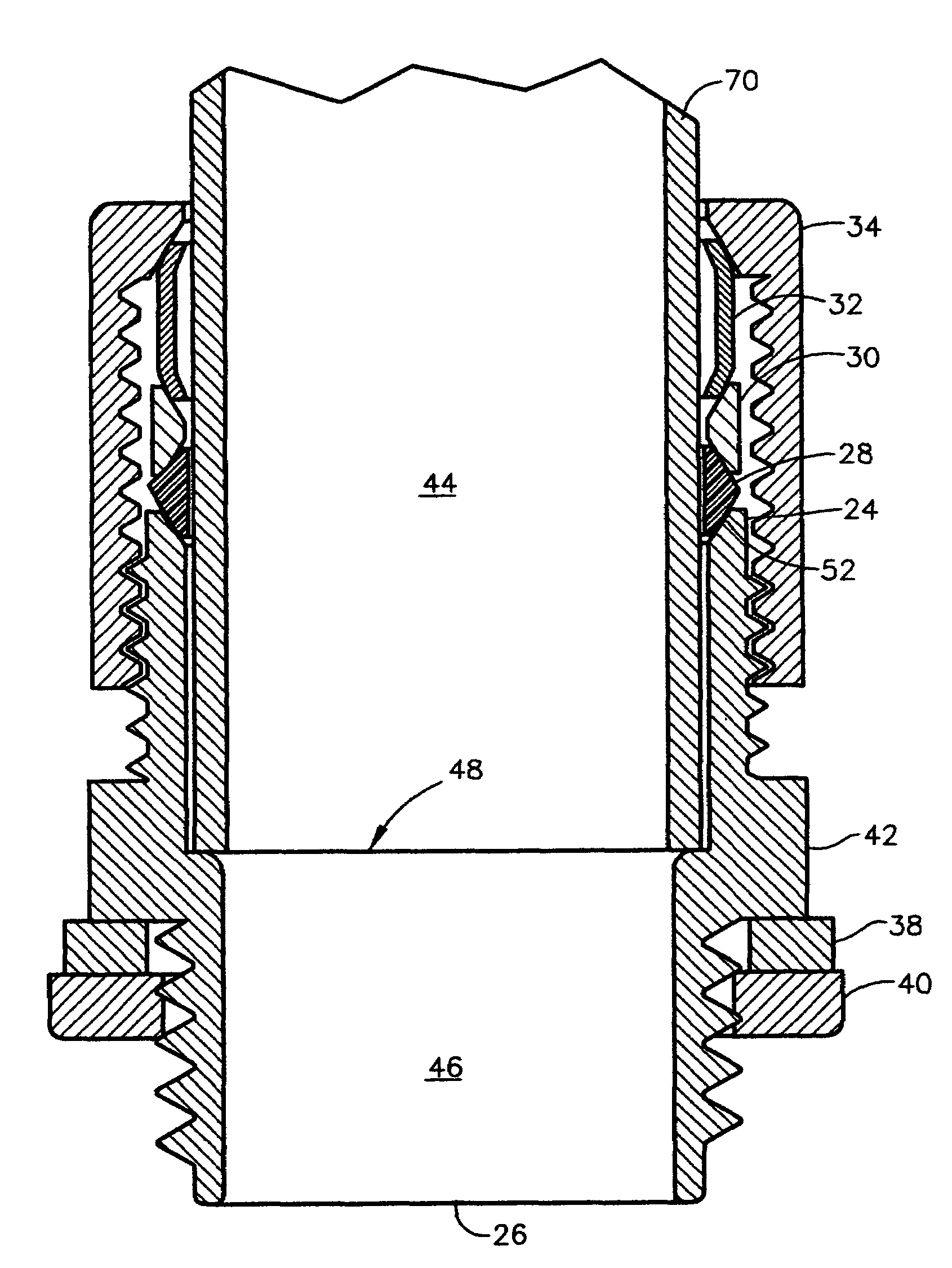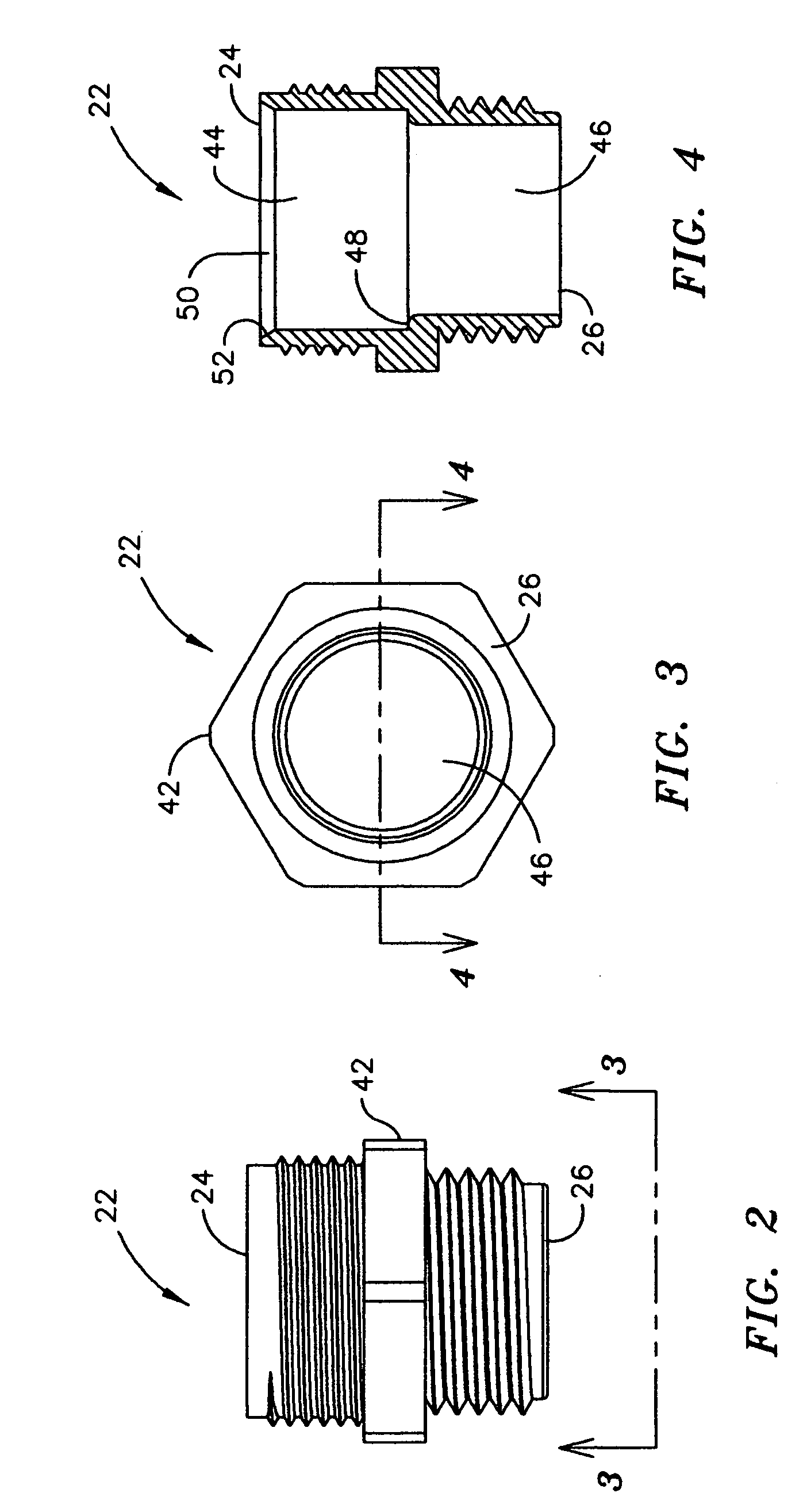Rain tight fitting
a technology for tight fittings and conduits, applied in the direction of pipe joints, fluid pressure sealed joints, sleeves/socket joints, etc., can solve the problems of out-of-screwness and tolerances of electrical conduits, compression fittings using split rings rarely form rain tight fittings, and other flaws are typically found in electrical conduits, such as out-of-roundness and tolerances. out of specification
- Summary
- Abstract
- Description
- Claims
- Application Information
AI Technical Summary
Problems solved by technology
Method used
Image
Examples
Embodiment Construction
[0018]Referring to FIG. 1, an exploded view is depicted of a preferred embodiment of a rain tight fitting 20 according to the present invention. The rain tight fitting 20 includes a tubular body member 22 having a threaded rearward end 24 and a forward end 26, a first seal ring 28, a second seal ring 30, a compression ring 32, a compression nut 34 and a fastening arrangement 36 on the forward end 26. The ends of the fitting 20 are named in reference to the way they will interact with a panel (not shown) that they will be connected to. The forward end 26 of the fitting 20 will face the panel and the rearward end 24 will face away from the panel. The fastening arrangement 36 may consist of a forward seal ring 38 and a lock nut 40 as shown in FIG. 1, or, as shown in FIG. 10, may alternatively consist of a spring steel adaptor 41B and a washer 41A as disclosed in U.S. application Ser. No. 10 / 017,537, filed Oct. 22, 2001 to Gretz and incorporated herein by reference in its entirety.
[0019...
PUM
 Login to View More
Login to View More Abstract
Description
Claims
Application Information
 Login to View More
Login to View More - R&D
- Intellectual Property
- Life Sciences
- Materials
- Tech Scout
- Unparalleled Data Quality
- Higher Quality Content
- 60% Fewer Hallucinations
Browse by: Latest US Patents, China's latest patents, Technical Efficacy Thesaurus, Application Domain, Technology Topic, Popular Technical Reports.
© 2025 PatSnap. All rights reserved.Legal|Privacy policy|Modern Slavery Act Transparency Statement|Sitemap|About US| Contact US: help@patsnap.com



